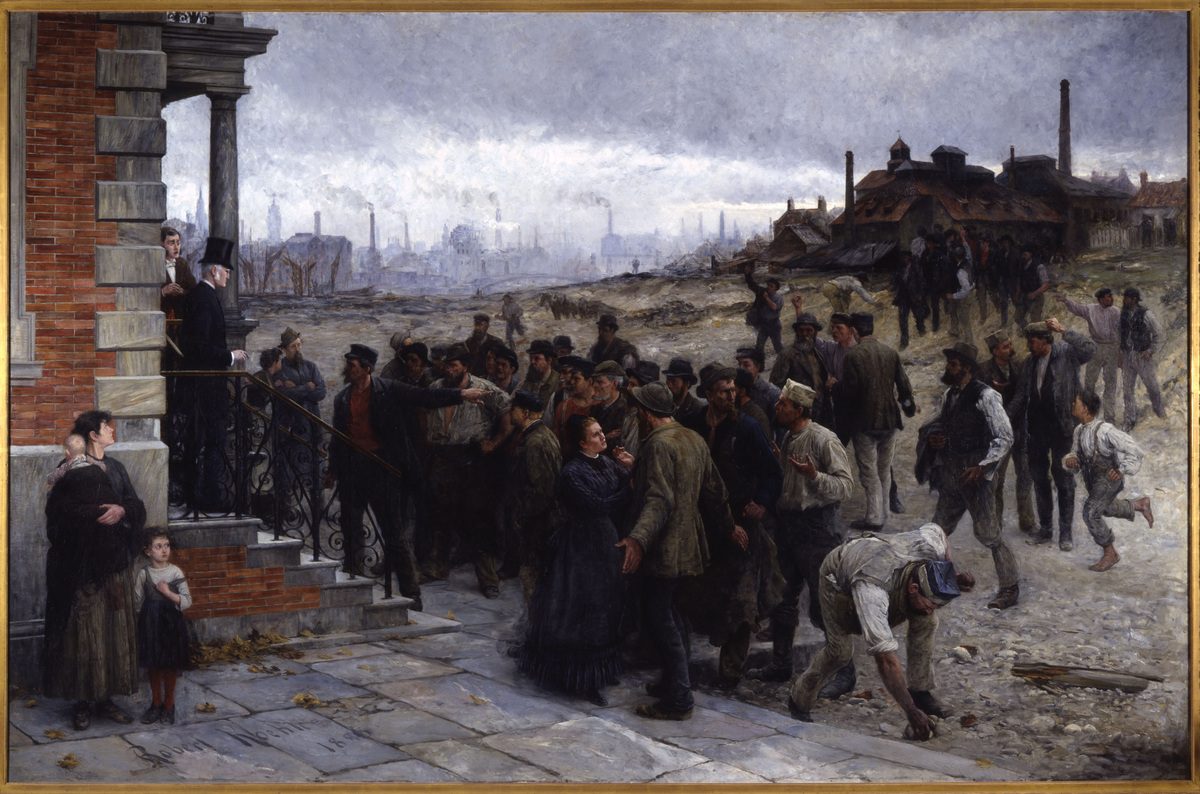Source

Source: Robert Koehler, Der Streik [The Strike]. Painting/oil on canvas (1886). Deutsches Historisches Museum Berlin, Inventar-Nr. 1990/2920.
Artist Robert Koehler (1850–1917) painted this scene in Munich. When it was exhibited in the U.S. in the spring of 1886 it created a sensation. One senses immediately that the confrontation between a factory employer (at left, in top hat) and a group of rebellious workers is about to break out into violence. The distance between the owner’s elegant brick villa, upon whose steps the employer is symbolically situated, and the factory in the background has been aggressively foreshortened by the artist. This allows Koehler to better emphasize the workers who stream out of the factory to come support the shop-floor representative, who, standing on the ground, confronts the factory employer from a position of literal inferiority. The tenseness of the situation is expressed by the representative’s stance and his red shirt, not to mention the foreground figure who arms himself with a rock. The employer’s stiff posture, reinforced by his black suit and top hat, suggests that he is not inclined towards compromise; even his own servant, standing behind him, seems fearful of what will come after the heated exchange of words.
This picture was painted after Koehler had experienced the workers’ movement on both sides of the Atlantic. Born to German parents in Hamburg, Koehler moved from Germany to the U.S. as a child; the family settled in Milwaukee, one of the preferred destinations for German immigrants. Koehler studied art—specifically lithography—in Pittsburgh and New York, and then attended the Art Academy in Munich. When this painting was shown at the spring 1886 exhibition of the National Academy of Design in New York, it was considered the most significant piece on display. Why? Because its exhibition coincided with the culmination of American workers’ demands for an eight-hour workday—a national wave of strikes involving about 350,000 workers in over 11,000 enterprises. Efforts to put down these strikes resulted in the Haymarket Massacre in Chicago on May 4, 1886.

Source: Robert Koehler, Der Streik [The Strike]. Painting/oil on canvas (1886). Deutsches Historisches Museum Berlin, Inventar-Nr. 1990/2920.
© Deutsches Historisches Museum, Berlin
Eight-Hour Workday (1894), published in German History Intersections, https://germanhistory-intersections.org/en/germanness/ghis:image-198.